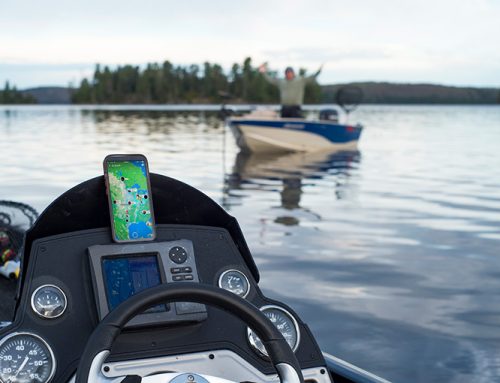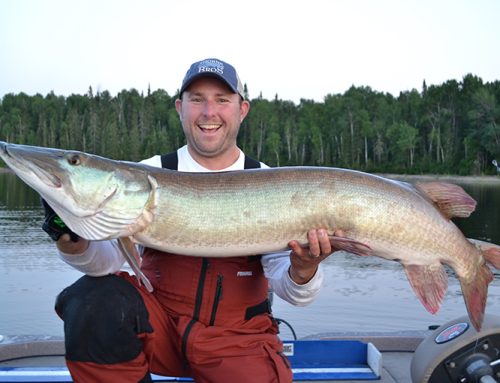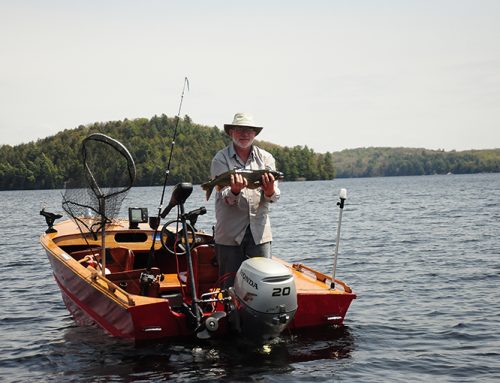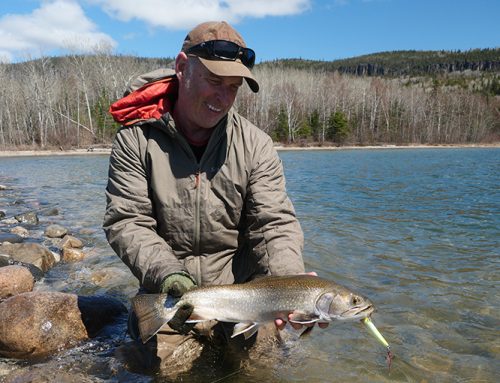
Ontario is loaded with lakes teeming with smallmouth bass, a species that only seems to be increasing in number, providing most anglers with incredible opportunities to catch these hard-fighting sport fish.
An aggressive species with a big appetite, smallmouths can be caught in a wide variety of ways and range of habitats. Smallmouth bass thrive in the lakes that dot the Canadian Shield, the massive area of ancient, exposed rocks that encircles Hudson Bay. Here is a guide to catching smallmouth in these watersheds.
The classic shield lake
There is no single element that marks a classic Canadian Shield lake. They are all just a little bit different in subtle and not-so-subtle ways. One thing they almost all have in common is a good percentage of rock and rubble shorelines, interspersed with sheer rock walks, rock points, islands and reefs. The better shield lakes ― at least from a smallmouth bass fishing perspective ― have a shallow bay, with sand and reeds and good areas for nesting. The more habitat variety there is in a shield lake, the better bass fishing will be. Water clarity also plays a role as smallmouth are primarily sight feeders. Most shield lakes are clear or semi-clear, although they can be as dark as coffee. Smallmouth fishing is more challenging in dark water, although it also seems some of the very largest bass come from these types of lakes.
Where to start fishing
Let’s break down some of the areas you will find smallmouth in shield lakes.
Points and rocky shorelines
One of the things I’ve always enjoyed about bass fishing in a classic shield lake is that structure is often visible. I’ve yet to see a main lake point on a shield lake that doesn’t hold bass. Smallmouth have some hard-wired need to hang around points, likely because they are great ambush spots.
Rock and boulder shorelines are also bass magnets, especially when a little wind is blowing into them. Large, scattered boulders offshore are even better, especially when completely submerged. Fish use large boulders as home base and some the largest bass I’ve ever caught have come from them.
Islands and saddles
Islands are also bass magnets, particularly when they’re smaller and have a lot of rock and rubble. Two or three islands close together can be especially good as there is often a “saddle” associated with them. A saddle is any rock, sand or boulder that is underwater but connects one island to another. Smallmouth bass love these areas, and the more complex the saddle, the better. There are several island saddles on the Shebandowan Lake system located north of my home in Thunder Bay. Shebandowan has every type of structure imaginable, but its clusters of small islands are my favourite stops. Some of the saddles have cabbage weed on them, some of them are plain sand or rubble. All have bass. I’ve seen similar scenarios in the Kawarthas and other lakes in the south and in northeastern Ontario. Explore saddles thoroughly, fishing shallow and deeper water.
Humps and rockpiles
While bass can be found on visible structure, they will also hold on stuff well below the surface. Sunken humps and rockpiles are fish magnets, and smallmouth are big fans. Having electronics with GPS can help you find sunken humps and mark them. Humps that are five to 10 feet from surface seem to hold the most bass, especially if they slide into deep water. Bass often hold on the top of the hump and will often suspend. Rock piles tend to be closer to the surface, but the best ones are generally offshore. Bass like rock piles too, but will hang off the sides, often near any larger boulders or rocks that provide shade and cover.
Shallow bays and weeds
For two decades, much of my summers and early falls were taken up fishing bass tournaments, primarily on large shield lakes. At first I fished rocks and classic structure. Due to competition from other anglers, my partners and I began seeking out smallmouths in shallower water and weeds. It was trickier to fish this stuff. Any sudden change in the weather seemed to kill the bite. It was eye opening, however, to see how many big bass were in thick cabbage, reeds, and lily pads. Sometimes they cruised the sand flats, feeding on insects and bait fish and seeming very exposed. Other times the bass were tucked deep in the weeds and had to be teased out. Generally, the fish were very shallow. Many were larger and fatter than the fish on classic rock structure.
Man-made stuff
Smallmouths have a habit of setting up shop on many of the things we humans build on the water. Very few people in cottage country have not caught a bass off a dock and nearly all have seen bass cruising around or hiding under them. Wood is hospitable to nymphs, leeches, snails, amphibians and all the other stuff bass eat.
Another well-used bass hangout is a waterline intake, especially if a few concrete blocks or boulders are holding it in place.
The third in the holy trinity of man-made bass attractors is the diving raft. On a hot sunny, summer day, smallmouth gravitate to the light-blocking rafts that populate many lakes in cottage country. And, as a disclaimer, I don’t recommend fishing near any of this stuff when people are around. Be respectful of others and good karma will come your way.
Classic shield lake lures
Jigs, tubes, soft plastic worms
The classic presentation for smallmouth bass is a jig with plastic. There are many options, and the Ned rig (see page 32 of the June 2022 issue) is a good one. However, any number of jigs and plastics will catch smallmouth. Jig heads should be naturally coloured black or brown, and not too heavy. Plastics of three to four inches are good. You can catch fish with everything from grubs to paddletails to goby copies. Tubes are a popular where bass are feeding on crawfish. Use a white or pearl tube for bass that are keyed in on smelt or shiners. Plastic shads, minnows, and lizards also work wonders.
Smaller plastic worms can be fished off a Ned rig head or even on a straight worm hook with a split shot. The worm can also be threaded on the hook or wacky rigged. Black, brown, pumpkinseed, blue, and purple are go-to soft plastic colours, with burnt orange and reddish brown a good choice where crawfish are common.
Senko-style stick baits
These stick baits looks like giant worms, or oversized French fries. They are normally impregnated with salt and are relatively heavy compared to other worms. They can be fished weightless, wacky or Texas rigged. I’ve found when cast weightless and allowed to drop along sharp breaks, rockpiles or over humps, they are hard for bass to resist.
Jerkbaits, crankbaits
Jerkbaits (long, thin crankbaits) are a solid choice. Popular examples include the Rapala X Rap and the Lucky Craft Pointer. Many jerkbaits have neutral buoyancy and hang in the water column. The jerkbait is cast out, then retrieved with sharp downward snaps of the rod tip. You can adjust the speed of the retrieve depending on how the fish are reacting. A quick retrieve will often trigger strikes but slowing down and extending the pause, can also work.
Fat-bodied crankbaits are also solid. Cast these to a rocky shoreline or the tip of points and make a steady retrieve back. Use colours that match local crawfish, tadpoles or sculpin.
Shad-shaped crankbaits are another option and can be cast or trolled. The Berkley Flicker Shad is a prime example. These lures run with a tighter wiggle than the fat bodied cranks and tend to dive deeper. They are good for working over rock piles, casting to downed timber and even working over open water where bass can be seen tearing into baitfish.
Spinnerbaits and spinners
A one-ounce white spinnerbait with a trailing stinger hook was a money bait in my tournament days. Spinnerbaits draw fish in a long way and are unlikely to snag on weeds.
Inline spinners such as the silver #4 Mepps Aglia with a dressed treble will also suck bass in. Clear water is especially good for getting bass to take spinners.
Topwater and floating lures
I’m leaving the best to last, as fishing smallmouth on the surface is just about the most fun you can have when fishing. There are many topwater lures that will catch bronzeback, put the Rebel Pop R, Rapala Skitter Prop, and Heddon Chug and Spook are just three popular options.
A popping topwater throws some water when given forward motion. Let the bait sit for a few seconds between pops and allow the bass to find it. Smallmouth will often explode on a lure that has stopped moving.
A prop lure works better on a straight retrieve, as the bass can track the whirring blade.
You will lose more bass fishing topwater, as they seem to jump more often, and the hooks are not always in as firmly as they could be. Yet the excitement of seeing a big smallmouth smoke a lure on top makes a little collateral damage OK.
Smallmouth bass are a tremendous sport fish, that please everyone from the first-time angler to the seasoned veteran. The beautiful thing for the Ontario angler is there may be no better place on earth to find these fish.
Originally published in the June 2022 issue of Ontario OUT of DOORS






I’m a newbe to fishing & am computer-speak illiterate. I would like to sign up for your mailing list but I don’t know whether to choose html or text. Can you please advise me?